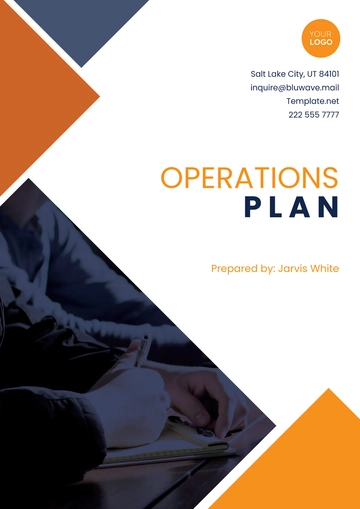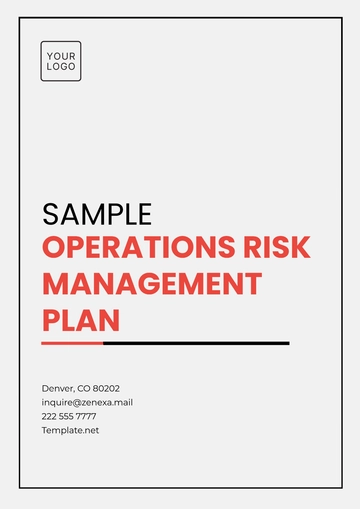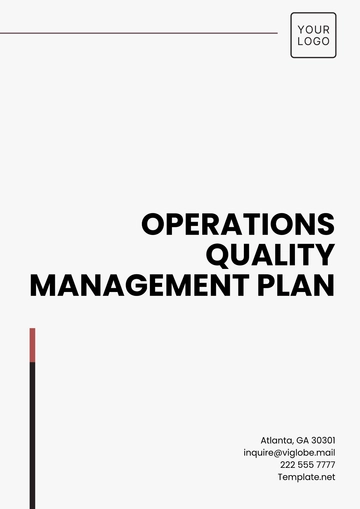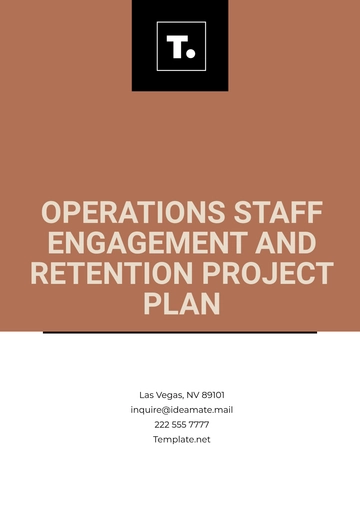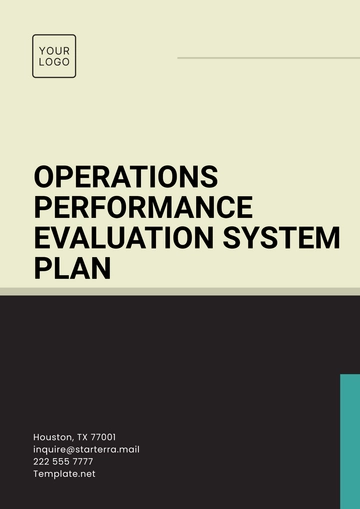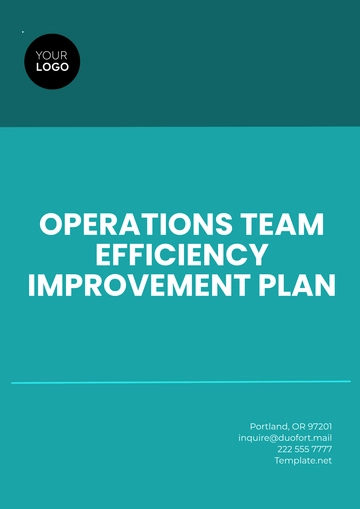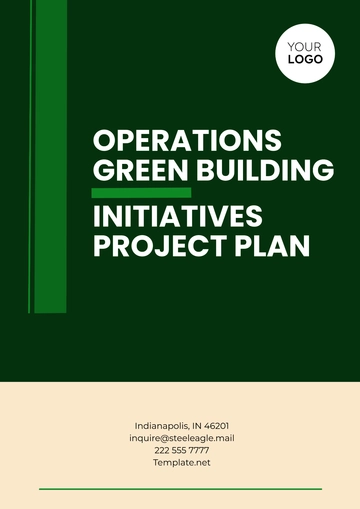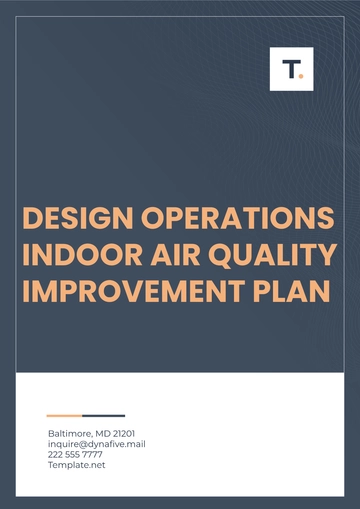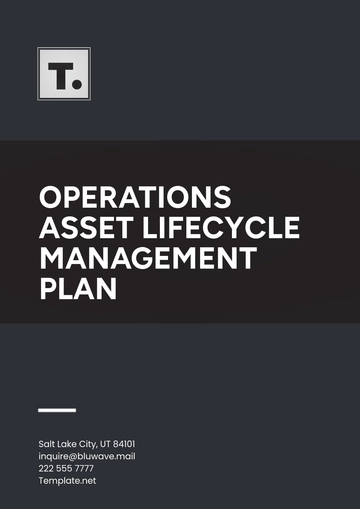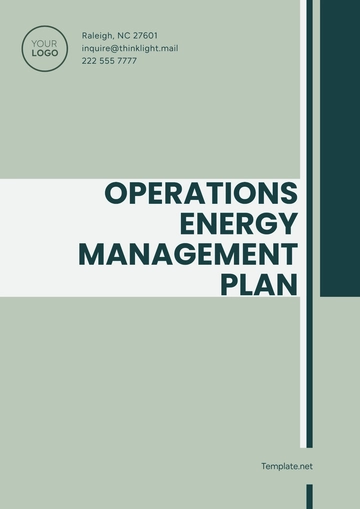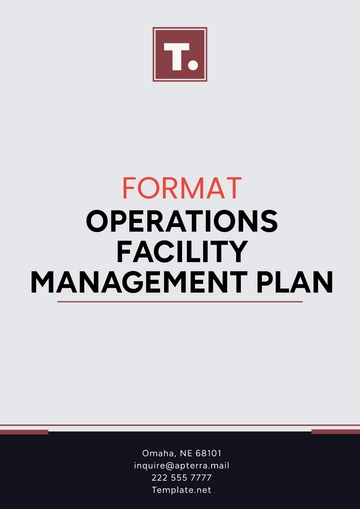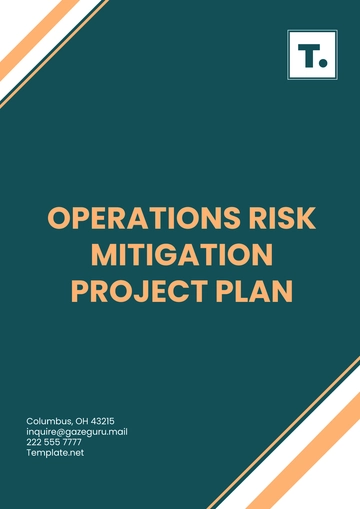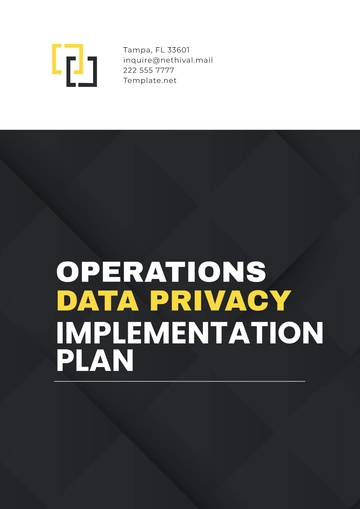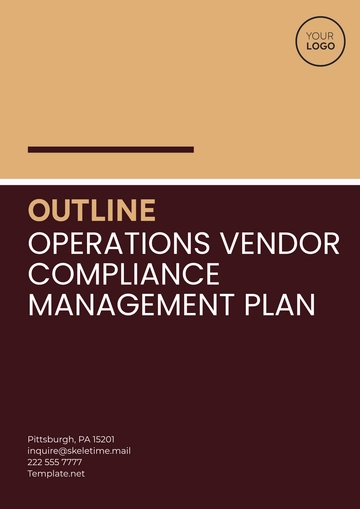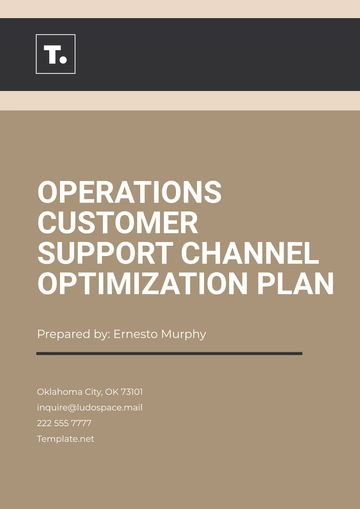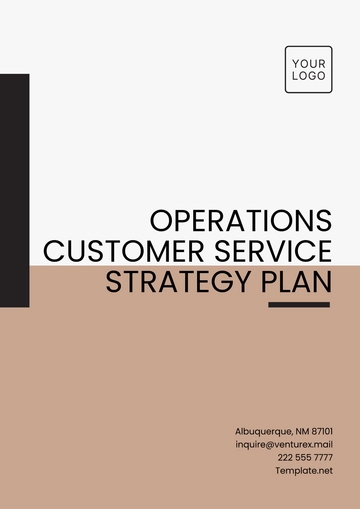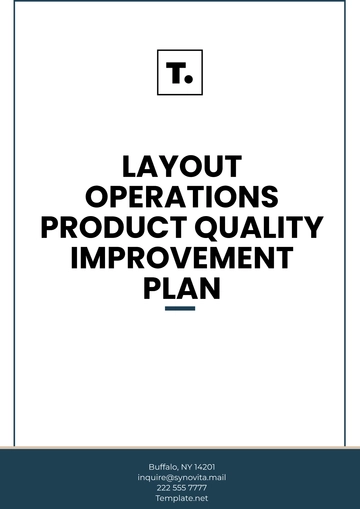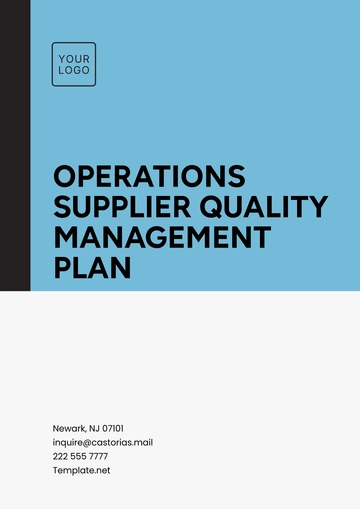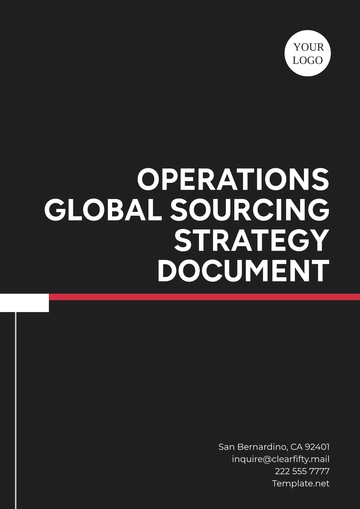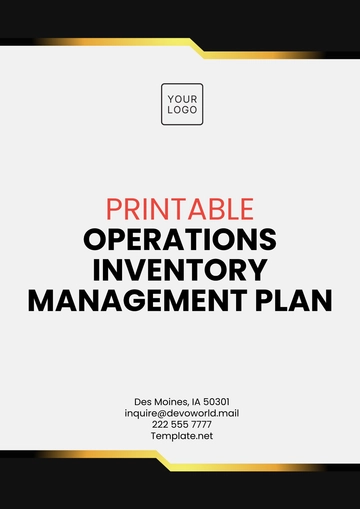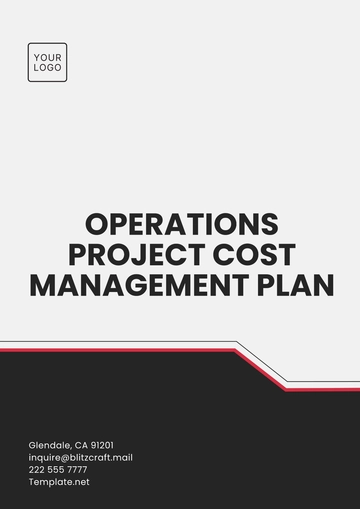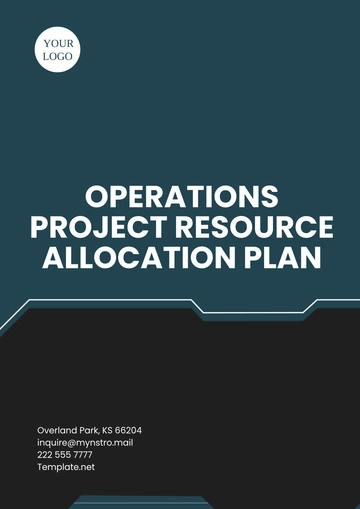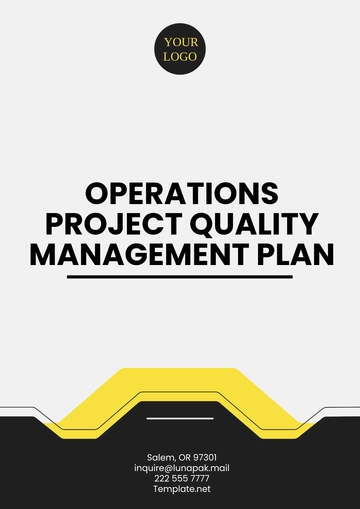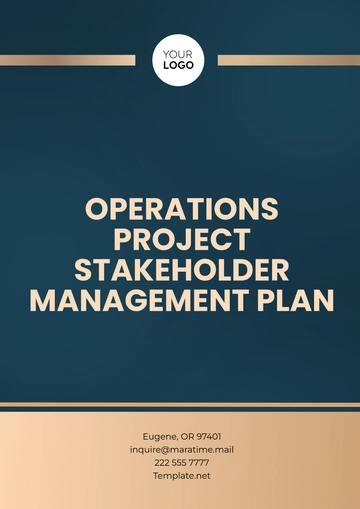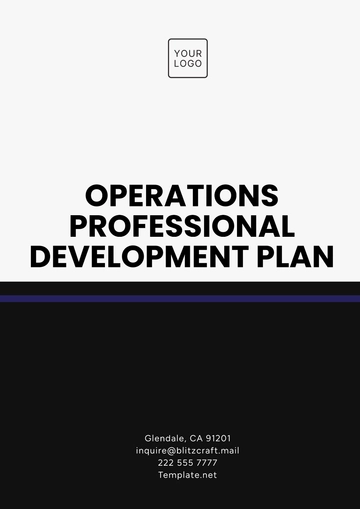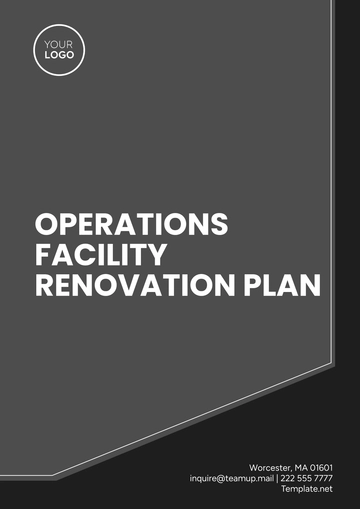Free Outline Operations Vendor Compliance Management Plan
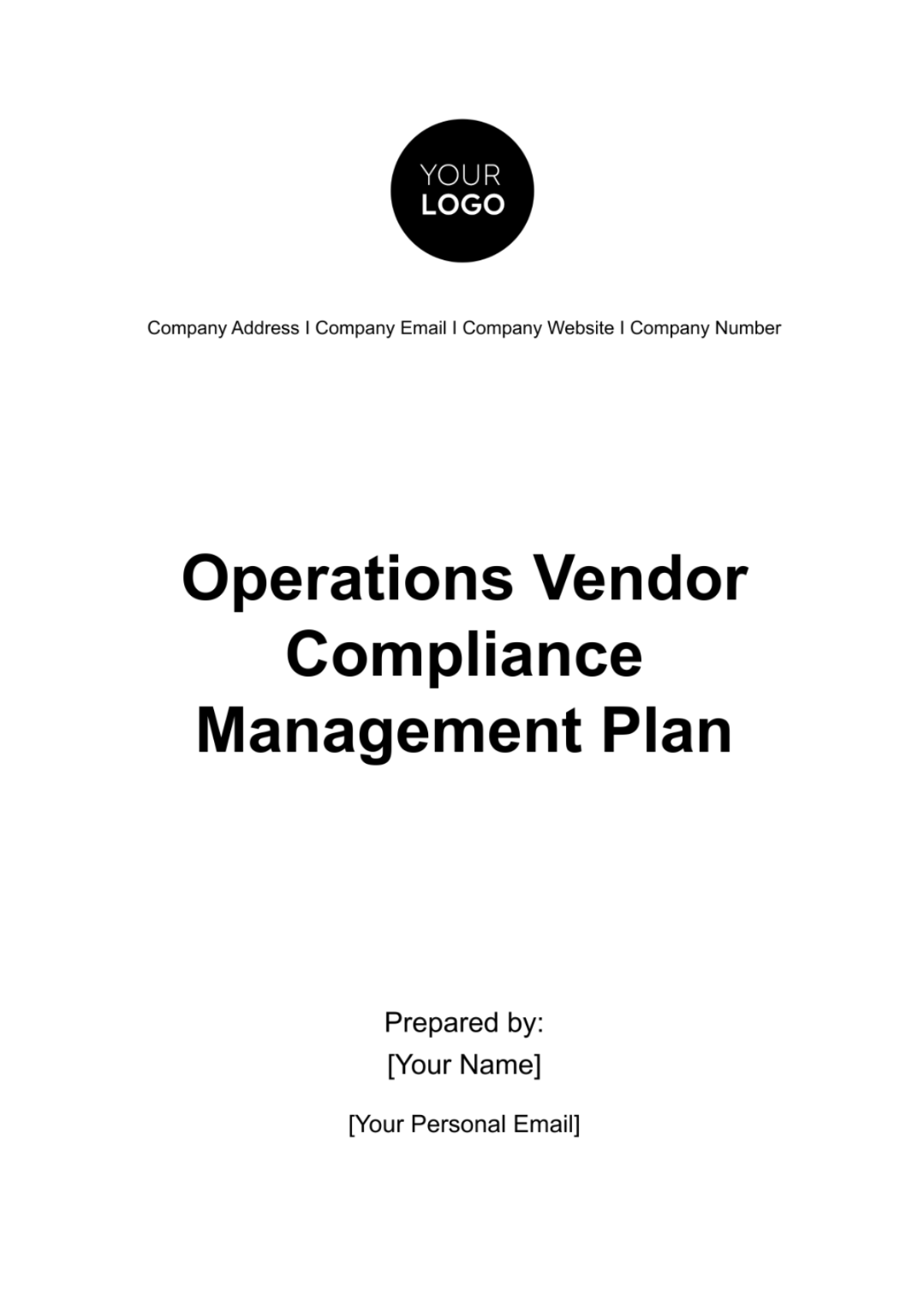
Prepared By: | [Your Name] |
Company: | [Your Company Name] |
Date: | [Date] |
1. Introduction
The Outline Operations Vendor Compliance Management Plan is a structured document designed to ensure that all vendors and suppliers adhere to legal, regulatory, and organizational compliance standards. It defines the processes and requirements for selecting, managing, and evaluating vendors to ensure they meet both contractual obligations and industry standards.
1.1 Purpose
The purpose of this plan is to provide a clear and systematic approach to ensuring vendor compliance, minimizing risk, and maintaining operational efficiency through proper oversight.
1.2 Scope
This plan applies to all external vendors, contractors, and suppliers engaged by the organization, regardless of their size, location, or the nature of their services.
2. Vendor Selection and Qualification Process
2.1 Initial Vendor Evaluation
Legal and Regulatory Compliance: Vendors must comply with relevant laws, regulations, and industry standards (e.g., data protection, environmental standards, labor laws).
Financial Stability: Vendors will be assessed based on their financial health to ensure they can fulfill long-term contracts.
Performance Metrics: Evaluation of previous performance in similar contracts, including quality, timeliness, and risk management.
2.2 Vendor Qualification Documentation
Compliance Certificates: Vendors must provide documentation of compliance with relevant industry regulations.
Insurance and Liability: Proof of necessary insurance coverage and liability protection.
Audit Rights: Agreement that the organization may audit the vendor’s operations and compliance records as needed.
3. Vendor Onboarding
3.1 Compliance Agreement
Terms and Conditions: Clearly outline all legal, regulatory, and internal compliance expectations that vendors must adhere to.
Code of Conduct: Vendors must commit to upholding ethical standards, including anti-bribery, anti-corruption, and environmental sustainability.
Confidentiality Agreements: Vendors must sign non-disclosure agreements (NDAs) to protect sensitive organizational and customer data.
3.2 Training and Orientation
Compliance Requirements Overview: Provide vendors with a training session or documentation to familiarize them with the organization’s compliance expectations.
Key Compliance Contacts: Designate internal points of contact for compliance questions or concerns.
4. Ongoing Compliance Monitoring
4.1 Performance Reviews and Audits
Periodic Audits: Scheduled audits of vendor operations to ensure compliance with contract terms and regulatory requirements.
Self-Assessments: Vendors may be required to complete self-assessments on their compliance practices on an annual or bi-annual basis.
Performance Reports: Regular performance reviews based on agreed-upon metrics, such as quality, delivery timelines, and compliance with laws.
4.2 Vendor Scorecard System
Compliance Metrics: Develop a scorecard system that evaluates vendor compliance with safety, environmental, financial, and legal standards.
Continuous Improvement: Vendors who fall below expectations will be provided with a performance improvement plan (PIP) to address any compliance issues.
5. Risk Management and Mitigation
5.1 Vendor Risk Assessment
Risk Categories: Identify risks related to vendor non-compliance, including legal, operational, reputational, and financial risks.
Impact Assessment: Evaluate the potential impact of non-compliance on the organization’s operations and reputation.
Risk Mitigation Plans: Develop and implement plans to reduce identified risks, such as vendor diversification or insurance.
5.2 Corrective Actions for Non-Compliance
Non-Compliance Triggers: Clearly define actions that will trigger corrective measures, such as missed deadlines, failure to meet quality standards, or legal violations.
Corrective Action Plans: Work with vendors to establish corrective action plans (CAPs) to address non-compliance.
Termination Clause: Define the conditions under which a vendor may be terminated for repeated or severe non-compliance.
6. Reporting and Documentation
6.1 Compliance Documentation
Centralized Repository: Maintain a centralized, secure system to store all compliance-related documentation, including vendor contracts, audit results, and corrective action plans.
Regular Reports: Provide regular compliance reports to senior management, summarizing vendor compliance status, performance metrics, and any corrective actions taken.
6.2 Vendor Communication
Compliance Updates: Communicate any updates to compliance regulations, policies, or standards to vendors regularly.
Feedback Mechanism: Establish a system for vendors to provide feedback on compliance processes, promoting transparency and mutual understanding.
7. Conclusion
This Outline Operations Vendor Compliance Management Plan ensures that all vendors meet organizational and regulatory standards. By following this plan, the organization can manage vendor relationships effectively, reduce risks, and maintain high standards of quality and compliance.
8. Appendices
Appendix A: Vendor Compliance Checklist
Appendix B: Sample Vendor Agreement
Appendix C: Compliance Audit Template
Appendix D: Risk Management Assessment Template
Appendix E: Performance Evaluation Scorecard
- 100% Customizable, free editor
- Access 1 Million+ Templates, photo’s & graphics
- Download or share as a template
- Click and replace photos, graphics, text, backgrounds
- Resize, crop, AI write & more
- Access advanced editor
Optimize your vendor relationships with the Outline Operations Vendor Compliance Management Plan Template from Template.net. This vital template is editable and customizable, ensuring you can oversee vendor compliance effectively. Specifically designed to be editable in our Ai Editor Tool, it simplifies the creation of a comprehensive plan that aligns with your operational standards and regulatory requirements, ensuring seamless vendor integration and management.
You may also like
- Finance Plan
- Construction Plan
- Sales Plan
- Development Plan
- Career Plan
- Budget Plan
- HR Plan
- Education Plan
- Transition Plan
- Work Plan
- Training Plan
- Communication Plan
- Operation Plan
- Health And Safety Plan
- Strategy Plan
- Professional Development Plan
- Advertising Plan
- Risk Management Plan
- Restaurant Plan
- School Plan
- Nursing Home Patient Care Plan
- Nursing Care Plan
- Plan Event
- Startup Plan
- Social Media Plan
- Staffing Plan
- Annual Plan
- Content Plan
- Payment Plan
- Implementation Plan
- Hotel Plan
- Workout Plan
- Accounting Plan
- Campaign Plan
- Essay Plan
- 30 60 90 Day Plan
- Research Plan
- Recruitment Plan
- 90 Day Plan
- Quarterly Plan
- Emergency Plan
- 5 Year Plan
- Gym Plan
- Personal Plan
- IT and Software Plan
- Treatment Plan
- Real Estate Plan
- Law Firm Plan
- Healthcare Plan
- Improvement Plan
- Media Plan
- 5 Year Business Plan
- Learning Plan
- Marketing Campaign Plan
- Travel Agency Plan
- Cleaning Services Plan
- Interior Design Plan
- Performance Plan
- PR Plan
- Birth Plan
- Life Plan
- SEO Plan
- Disaster Recovery Plan
- Continuity Plan
- Launch Plan
- Legal Plan
- Behavior Plan
- Performance Improvement Plan
- Salon Plan
- Security Plan
- Security Management Plan
- Employee Development Plan
- Quality Plan
- Service Improvement Plan
- Growth Plan
- Incident Response Plan
- Basketball Plan
- Emergency Action Plan
- Product Launch Plan
- Spa Plan
- Employee Training Plan
- Data Analysis Plan
- Employee Action Plan
- Territory Plan
- Audit Plan
- Classroom Plan
- Activity Plan
- Parenting Plan
- Care Plan
- Project Execution Plan
- Exercise Plan
- Internship Plan
- Software Development Plan
- Continuous Improvement Plan
- Leave Plan
- 90 Day Sales Plan
- Advertising Agency Plan
- Employee Transition Plan
- Smart Action Plan
- Workplace Safety Plan
- Behavior Change Plan
- Contingency Plan
- Continuity of Operations Plan
- Health Plan
- Quality Control Plan
- Self Plan
- Sports Development Plan
- Change Management Plan
- Ecommerce Plan
- Personal Financial Plan
- Process Improvement Plan
- 30-60-90 Day Sales Plan
- Crisis Management Plan
- Engagement Plan
- Execution Plan
- Pandemic Plan
- Quality Assurance Plan
- Service Continuity Plan
- Agile Project Plan
- Fundraising Plan
- Job Transition Plan
- Asset Maintenance Plan
- Maintenance Plan
- Software Test Plan
- Staff Training and Development Plan
- 3 Year Plan
- Brand Activation Plan
- Release Plan
- Resource Plan
- Risk Mitigation Plan
- Teacher Plan
- 30 60 90 Day Plan for New Manager
- Food Safety Plan
- Food Truck Plan
- Hiring Plan
- Quality Management Plan
- Wellness Plan
- Behavior Intervention Plan
- Bonus Plan
- Investment Plan
- Maternity Leave Plan
- Pandemic Response Plan
- Succession Planning
- Coaching Plan
- Configuration Management Plan
- Remote Work Plan
- Self Care Plan
- Teaching Plan
- 100-Day Plan
- HACCP Plan
- Student Plan
- Sustainability Plan
- 30 60 90 Day Plan for Interview
- Access Plan
- Site Specific Safety Plan
